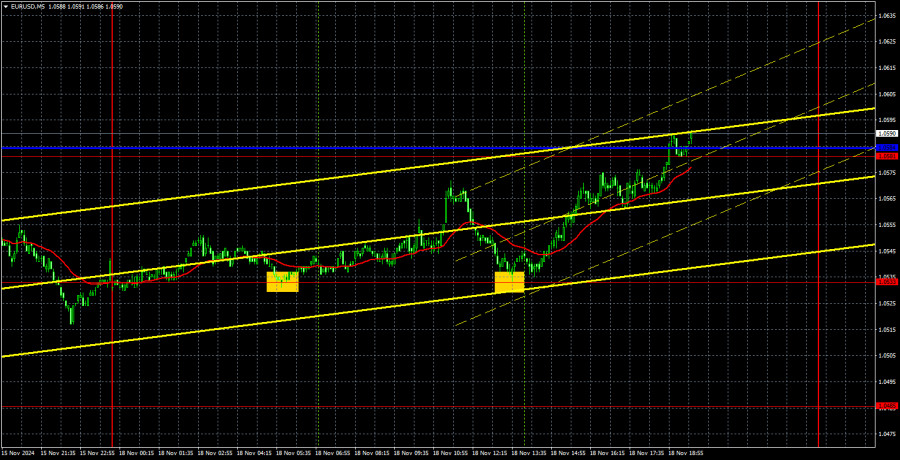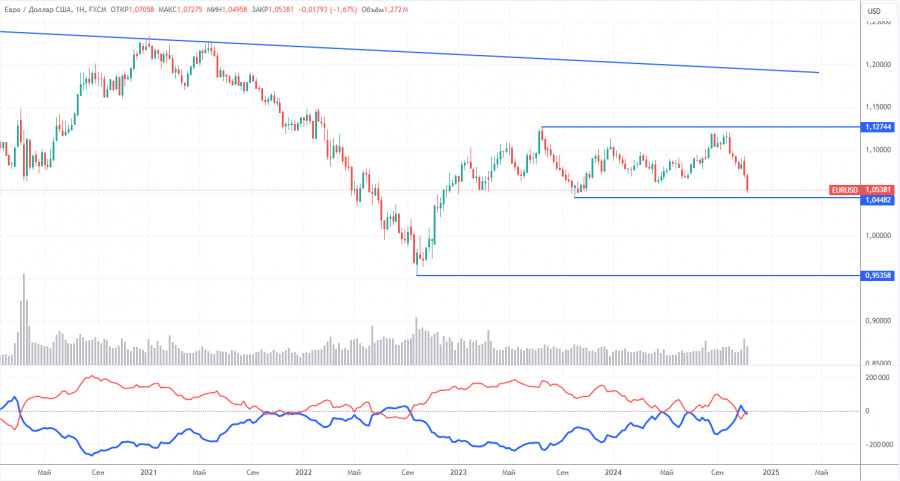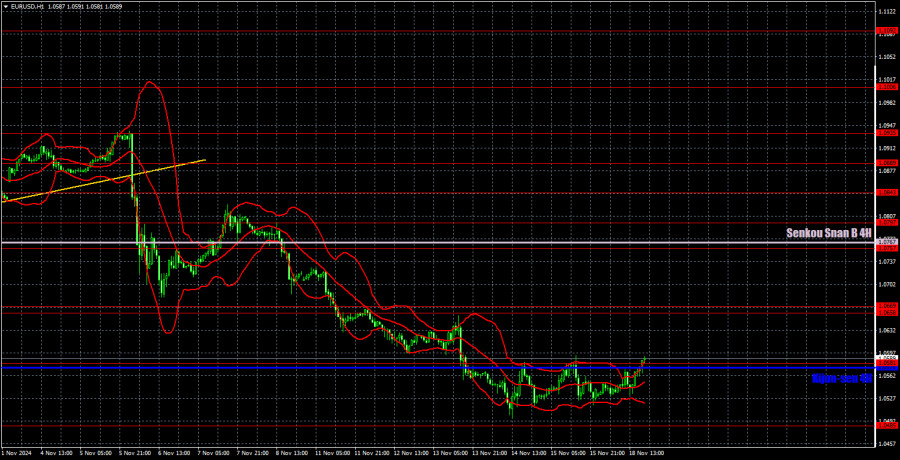EUR/USD 5-Minute Analysis

The EUR/USD currency pair attempted to initiate a new upward correction on Monday. These attempts appear relatively weak, but they still offer some hope for the euro. Currently, we see no substantial justification, not even for a correction. However, it's also true that corrections don't always require clear reasons or justifications. Bears might start taking profits on short positions, resulting in an upward retracement.
This week, very few significant events are scheduled in the U.S. and the Eurozone, which means the euro has limited support opportunities. The market will likely use any correction as a chance to resume selling. We don't believe this marks the end of the euro's downward trend. Furthermore, European Central Bank President Christine Lagarde's Monday remarks failed to provide any notable market catalysts.
Trading signals on Monday were relatively good. With high accuracy, the price rebounded twice from the 1.0533 level, allowing traders to open long positions. While sell orders remain risky at this time, the signals were very precise. The price failed to reach the nearest target zone in the first instance. In the second, it succeeded. Consequently, the first trade might have closed at breakeven with a Stop Loss, while the second trade could have closed with a profit at Take Profit. If the price consolidates above the Kijun-sen line, carefully considering long positions could continue.
COT Report

The latest COT report, dated November 12, shows that the net position of non-commercial traders has remained bullish for a long time. The last attempt by bears to gain dominance failed. However, a month ago, professional traders significantly increased their short positions, leading to the net position turning negative for the first time in a long period. This indicates that the euro is now being sold more frequently than bought.
We still see no fundamental reasons for strengthening the euro, and technical analysis suggests the price remains in a consolidation zone—essentially a flat trend. On the weekly timeframe, it's clear that since December 2022, the pair has traded between 1.0448 and 1.1274. The market has transitioned from a seven-month flat phase to a 22-month phase. Thus, further decline remains likely toward 1.0448, which is only a short distance away.
Over the last reporting week, the number of long positions among the non-commercial group increased by 100, while short positions decreased by 14,100, causing the net position to grow by 14,200. The euro's downside potential remains significant.
EUR/USD 1-Hour Analysis

The pair continues to form a downward trend on the hourly time frame. There is little point in discussing fundamental and macroeconomic factors behind the dollar's medium-term decline—they are largely absent. We expect nothing but a continuation of the euro's decline in the medium term. Each day reinforces our belief that the market has fully priced in the Fed's monetary easing cycle, and the Fed shows no urgency to cut rates further. The euro can only hope for a correction.
On November 19, we highlight the following levels for trading - 1.0340-1.0366, 1.0485, 1.0581, 1.0658-1.0669, 1.0757, 1.0797, 1.0843, 1.0889, 1.0935, 1.1006, as well as the Senkou Span B (1.0767) and Kijun-sen (1.0575) lines. The Ichimoku indicator lines may shift throughout the day, which should be considered when identifying trading signals. Remember to set a Stop Loss order to break even if the price moves 15 pips in the intended direction. This will protect against potential losses if the signal proves false.
Only a few secondary events are scheduled in the Eurozone and the U.S. on Tuesday, which is unlikely to capture the market's attention. The EU inflation report may appear significant, but it will be a second estimate, which rarely deviates from the first. If it does, a market reaction could occur. However, inflation trends are no longer a critical focus for the ECB.
Chart Explanations:
Support and resistance levels: thick red lines around which movement may end. They are not sources of trading signals.
Kijun-sen and Senkou Span B lines: Ichimoku indicator lines transferred from the 4-hour to the 1-hour timeframe. These are strong lines.
Extreme levels: thin red lines where the price previously rebounded. They are sources of trading signals.
Yellow lines: Trend lines, trend channels, and other technical patterns.
Indicator 1 on COT charts: The net position size for each category of traders.
The material has been provided by InstaForex Company - www.instaforex.comfrom Forex analysis review https://ift.tt/6E7gsUw
via IFTTT
